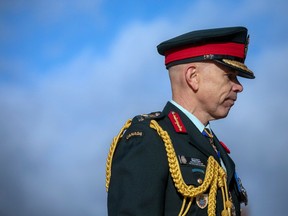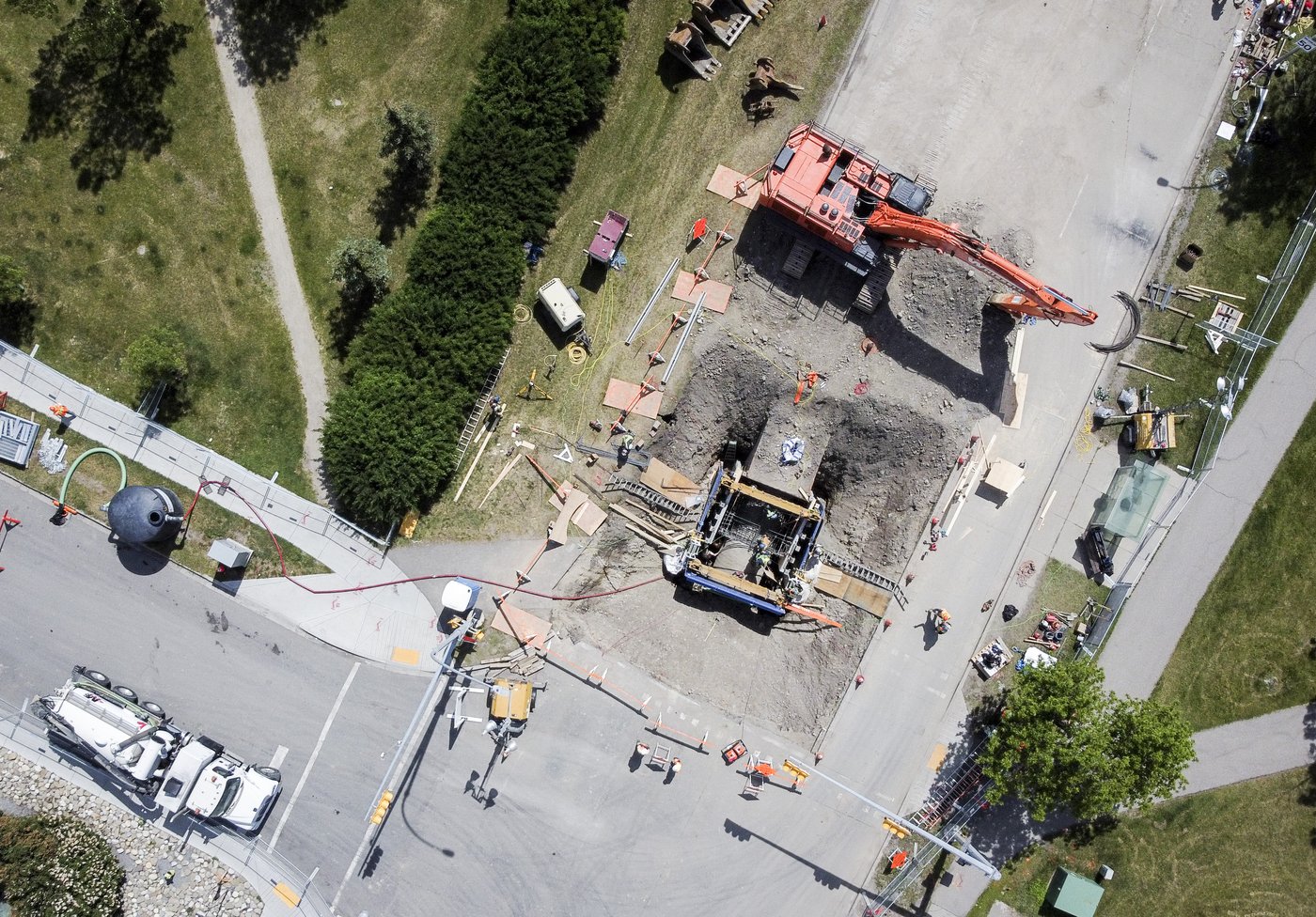Too much bureaucracy at NDHQ, Gen. Wayne Eyre says. But he offers no solution to the problem.

Canada’s top general says there are too many organizations headed by senior officers and bureaucrats at National Defence headquarters but he stopped short of pushing for any specific changes to the current system.
Eyre acknowledged the growing bureaucracy at the Ottawa headquarters, which keeps expanding even while the number of frontline military personnel shrinks.
THIS CONTENT IS RESERVED FOR SUBSCRIBERS ONLY
Subscribe now to read the latest news in your city and across Canada.
- Exclusive articles from Elizabeth Payne, David Pugliese, Andrew Duffy, Bruce Deachman and others. Plus, food reviews and event listings in the weekly newsletter, Ottawa, Out of Office.
- Unlimited online access to Ottawa Citizen and 15 news sites with one account.
- Ottawa Citizen ePaper, an electronic replica of the print edition to view on any device, share and comment on.
- Daily puzzles, including the New York Times Crossword.
- Support local journalism.
SUBSCRIBE TO UNLOCK MORE ARTICLES
Subscribe now to read the latest news in your city and across Canada.
- Exclusive articles from Elizabeth Payne, David Pugliese, Andrew Duffy, Bruce Deachman and others. Plus, food reviews and event listings in the weekly newsletter, Ottawa, Out of Office.
- Unlimited online access to Ottawa Citizen and 15 news sites with one account.
- Ottawa Citizen ePaper, an electronic replica of the print edition to view on any device, share and comment on.
- Daily puzzles, including the New York Times Crossword.
- Support local journalism.
REGISTER / SIGN IN TO UNLOCK MORE ARTICLES
Create an account or sign in to continue with your reading experience.
- Access articles from across Canada with one account.
- Share your thoughts and join the conversation in the comments.
- Enjoy additional articles per month.
- Get email updates from your favourite authors.
Sign In or Create an Account
or
There could be a need to restructure National Defence or the Canadian Forces, Eyre, who is to retire in July, told officers at a closed-door session.
But he offered no specific direction forward other than to acknowledge changes had to be made. “I am of the personal view that we have too many military and civilian Level 1s,” he told the officers during the meeting in April. “So lots of work in that space.”
Level 1 refers to organizations reporting directly to the deputy minister or the chief of the defence staff. Currently there are 23 such organizations, National Defence spokesperson Frédérica Dupuis confirmed.
Dupuis noted that on May 1 a new Level 1 organization was created for digital transformation. The Level 1 organizations range from the military services, such as the Canadian Army, to civilian organizations such as the Assistant Deputy Minister for Public Affairs. Each have their senior staff as well as support personnel.
The number of generals is also growing. Currently there are 140 officers at the general rank level or equivalent, according to the latest figures provided by National Defence. They command a total of 86,175 regular and reserve force military personnel.
In contrast, in 2011 there were 111 general-rank level officers to command 101,100 personnel, according to statistics obtained by this newspaper using the Access to Information law.
National Defence stated Eyre was not available for comment or to be interviewed. The department declined a request to release the video of Eyre’s online meeting with officers, noting it was for internal use only. A copy was leaked, however, to this newspaper.
The issue of excessive bureaucracy in the military and National Defence is not a new one. In 2011, then Lt. Gen. Andrew Leslie tabled a report on how to transform the Canadian Forces for the future, noting the significant increase of military and civilian staff at National Defence headquarters.
The Liberal election platform in 2015 promised to reduce the size of administration within National Defence and the Canadian Forces. Prime Minister Justin Trudeau later said his government would ensure the military would have “more teeth and less tail.”
But that never happened. Eyre did not explain at the closed door meeting with senior military personnel why he didn’t make efforts during his tenure as defence chief to do something about the issue.
In November 2021, this newspaper also noted a National Defence report which showed the number of rank and file soldiers significantly shrinking while the number of generals increased.
A second set of records obtained through the access law by this newspaper showed the military’s public affairs branch was concerned in 2021 there might be increased scrutiny about the increasing number of generals.
In response, public affairs officers developed messages highlighting the leadership abilities of Canadian generals and admirals. If a journalist asked about the high number of senior officers, the military response was to be: “General Officers and Flag Officers lead the CAF in defending our country’s values and interests, here at home and abroad, and they are considered institutional leaders.”
Another of the public affairs messages to be issued to journalists noted that, “General Officers and Flag Officers are instrumental to meet the increased coordination and leadership requirements associated with Canada’s complex operational commitments.”
Resistance to cut the military leadership has, in the past, come from the military leadership itself. Leslie himself noted that at a meeting in December 2010 involving generals, admirals and senior DND public servants, there was a tendency for the group to argue for the status quo.
A separate study by Leslie’s team also examined the failure of previous attempts to cut costs and streamline the bureaucracy. It concluded that DND’s leadership “does not respond well to change initiatives and when it does, it reacts slowly.”
Share this article in your social network



